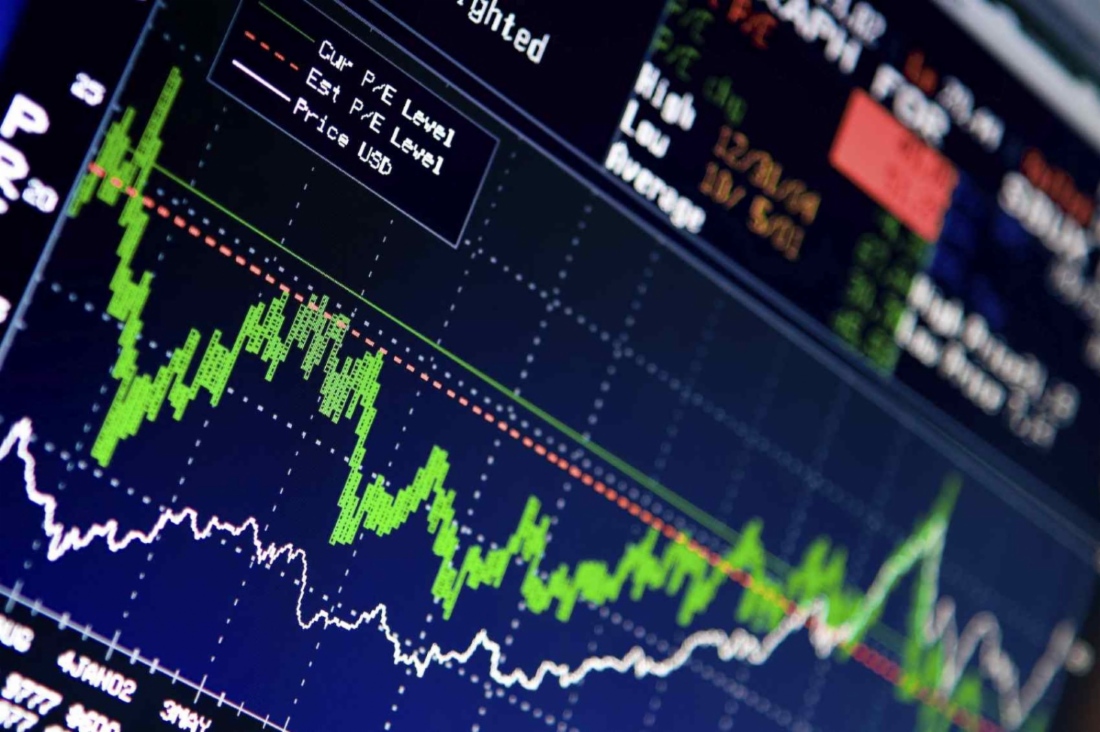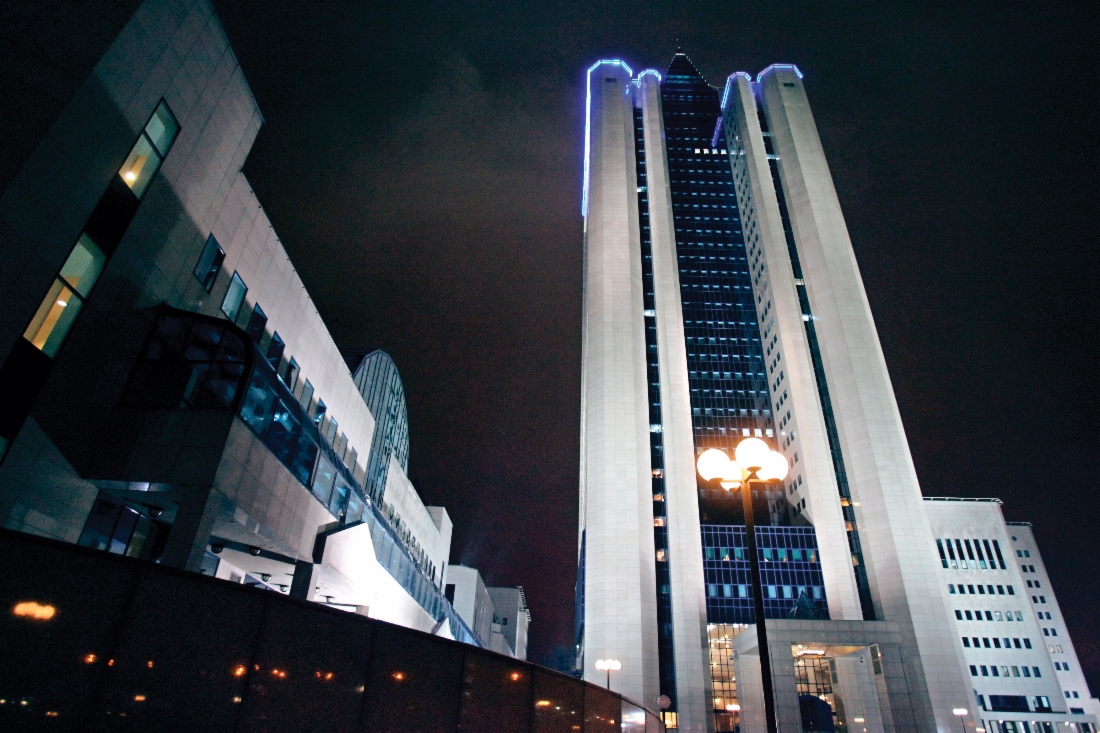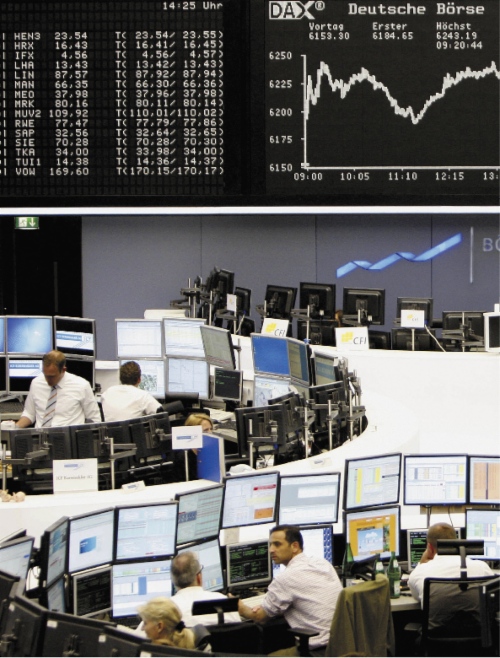Andrey Kruglov: Ability to Withstand Crises
December 27, 2011, the interview was taken by Sergey Pravosudov
Published in corporate Gazprom Magazine Issue 12
Andrey Kruglov, Deputy Chairman of the Management Committee – Head of the Department for Finance and Economics of Gazprom answers questions posed by the Gazprom Magazine.
Profit Growth
- Mr. Kruglov, what financial results does Gazprom Group plan to end FY 2011 with?
-
In 2011 one could have observed the positive dynamics of prices and volumes on Gazprom Group’s major sales markets. Hence, we are awaiting good financial results at year-end. Specifically, EBITDA will grow by more than 30 per cent to some USD 60 billion as compared to USD 44 billion in 2010.
Last year we became the leading public company worldwide in terms of net profit. We confirmed this status by the interim results for the first six months in 2011: Gazprom Group’s net profit totaled RUB 772 billion as compared to RUB 495 billion the year before. We plan to retain the solid growth of net profit by the year-end – it is anticipated to grow up to USD 40 billion this year as compared to USD 32 billion last year. So, the favorable situation on the external markets and the stringent control over the operational activities will result in the Company’s profitability growth.
- And what are the plans for 2012?
-
As you know, prices of natural gas supplies to Europe and other countries are generally tied to global oil prices and due to a base period of 6 to 9 months are subject to less sharp volatility as compared to global oil price fluctuations. Taking into consideration the high oil price at the end of the current year, we expect an increase in the gas price on major sales markets next year as compared to 2011. We also expect that in 2012 our sales on export markets will rise as well. Consequently, despite the growing tax burden on the gas industry, the Company’s bottom lines will continue to improve.
Debt Reduction
- How has the debt burden on the Corporation changed in recent years? Do you plan to further reduce it?
-
The Company’s management pays special attention to the size of debt burden and the status of debt ratios, as those determine the cost of new borrowings. Beginning from the moment of crisis development on the global financial markets Gazprom Group’s debt load has reduced significantly. According to the 2011 half-year results, IFRS total liabilities of Gazprom Group dropped down to USD 45 billion – almost 16 per cent lower than the liabilities level at the 2009 year-end.
Debt ratios are at the more than comfortable level for the Corporation. Let me remind you that for Gazprom Group there are objective parameters stipulating financial leverage of not more than 40 per cent, net debt to EBITDA ratio – less than 1.0, and total liabilities to EBITDA ratio – less than 1.2. If we have a look at the 2011 half-year results, the financial leverage was less than 18 per cent, net debt to EBITDA ratio – 0.5 and total liabilities to EBITDA ratio – 0.8, which are much better than objective parameters.
We expect to maintain the positive dynamics of debt load. Following the 2011 results we expect a slight increase in Gazprom Group total liabilities – approximately up to USD 48 billion. With that, debt ratios will remain at the same level.
- Does Gazprom plan to sell non-core assets in the short run (specifically Gazprombank share)?
-
Gazprom is the owner of share capital in several banks’ equities. These assets are designated as non-core assets and we plan to reduce our share in the long run. As to the Gazprombank, we own some 41.7 per cent of its equities. In case of favorable market conditions and having received satisfactory offer we are supposed to reduce this share down to the blocking stake of 25 per cent plus one share.
Project Financing
- What are your plans in the sphere of project financing utilization?
-
We actively utilize project financing of complex projects with foreign partners which provides for reduction of debt load on Gazprom Group. To be more specific, we successfully used methods of the project financing to implement such large scale invest projects as Sakhalin II (with a total sum of USD 6.7 billion), Yuzhno-Russkoye oil and gas field development (EUR 1.1 billion), construction of the North Stream gas pipeline (some EUR 6.4 billion), and construction of an Olympic games facility – Adler TPP, as well (RUB 19.5 billion).
We are supposed to use these methods in the future under the international project of development of A1 Achimov deposits in Urengoy field, and also to finance construction of underwater section of the South Stream gas pipeline.
With the aim to enhance the utilization of project financing, on July 21, 2011 an order has been inked on vesting 100 per cent subsidiary Gazprom Investproject responsibility of Gazprom Group’s projects implementation in the territories of the Russian Federation and FSU countries with the use of project financing.
Today, under delegated authority Gazprom Investproject has begun deliberations on possibility of accomplishment under the terms of limited recourse financing of the following major projects:
- Construction of power station in the Vorsino Industrial Park (Kaluga Oblast);
- Construction of captive power station in Orenburg;
- Construction of Astrakhan gas turbine TPP;
- Project of autonomous gas supply system in Kurgan Oblast.
Equity Capital
- An idea of switching to rubles in transactions with the foreign partners was sounded earlier. What did you manage to do in this area?
-
As is well known, some 60 per cent of Gazprom Group earnings are nominated in foreign currency, and more than 80 per cent of operating expenses are in rubles. It would be interesting for us if some part of export earnings would be nominated in rubles to reduce exchange risks in part of operating expenses. With this, one should mention that major part of the total debt of Gazprom Group is nominated in foreign currency and increasing the share of earnings in rubles provides for reduction of the risks in servicing debts.
We are progressing successfully in this direction. For example, in December 2011 a new addendum to the operational natural gas sales contract between Gazprom and Naftogaz Ukrainy was inked allowing Naftogaz Ukrainy to pay for supplies of Russian gas in rubles as well.
- How long may the period of instability last in the stock exchange markets?
-
Instability came back to the stock exchange in spring of this year due to the aggravation of situation in the European debt market and decline of major global economies prospects. Preventing expansion of the debt crisis onto other European countries besides Greece, as well as efficient solving the challenge of external debts of several European countries are still on the agenda. We support the widespread opinion that it may take several years to solve these problems irrevocably. We assume that volatility and ambiguity of stock markets prospects will remain in the mid term forecast.
- What are the prospects of Gazprom shares?
-
It goes without saying that dynamics of the Russian stock exchange depends greatly on that of international trade hubs. That is why the Russian stock market demonstrates weak dynamics despite strong fundamental parameters of the Russian economy, despite high energy price as well. Currently, estimates of the Russian oil and gas sector are placed on the very low levels: the price-to-earnings (P/E) ratio of the major companies in the sector is 3.0 to 4.0. At that, estimates of the global counterpart companies (despite the market ambiguity) are considerably higher.
We emphasize, the fundamental parameters of Gazprom are still strong and the long-term model of the Company’s development showed its stability in times of uncertainties and crisis build-up in the global financial markets. That is why we anticipate outrunning growth of the Company’s stock quotations in line with reduction of volatility in the global economy.
Costs
- What are the plans to cut costs of Gazprom Group?
-
The most part of operational expenses – 90 per cent in core business (which is production, transmission, underground storage and processing of gas for Gazprom) fall onto production and transmission. Along with that 55 per cent of all expenses in production and some 40 per cent in transmission of gas could not be reduced by the management efforts, i.e. they are uncontrolled. Specifically, these are taxes, depreciation and royalties which depend on depreciation. After increasing the severance tax in 2012 the share of uncontrolled expenses will grow up to 69 per cent.
If you put aside effect of uncontrolled factors (increase of tax load, depreciation deductibles, including those caused by revaluation of key assets, as well as stipulated by Federal Tax Service increase of prices for gas utilized for technological needs), the growth of unit cost of production of 1000 cubic meters of commercial gas in three years (2012 forecast as compared to actual 2009 data) amounts to 9 per cent. The unit cost of transmission practically stays unchanged. By contrast, solely for the 2011 the Ministry of economic development defined the index of price rise for industrial producers at the level of 18.8 per cent.
Positive results in control of growth rate of manageable costs are obtained, to a substantial degree, thanks to the comprehensive approach being utilized in Gazprom which includes reduction of costs during the budgeting process, generation and execution of reduction costs program, as well as implementation of direct measures to cut costs. As to the latter, for example, in 2011 we aimed for restraint of rate of price increases on purchased products and services at the level not more than 80 per cent of the rate of price increases of the producers according to the data from the Ministry of economic development, and we successfully coop with this objective. This activity will be continued next year as well.










